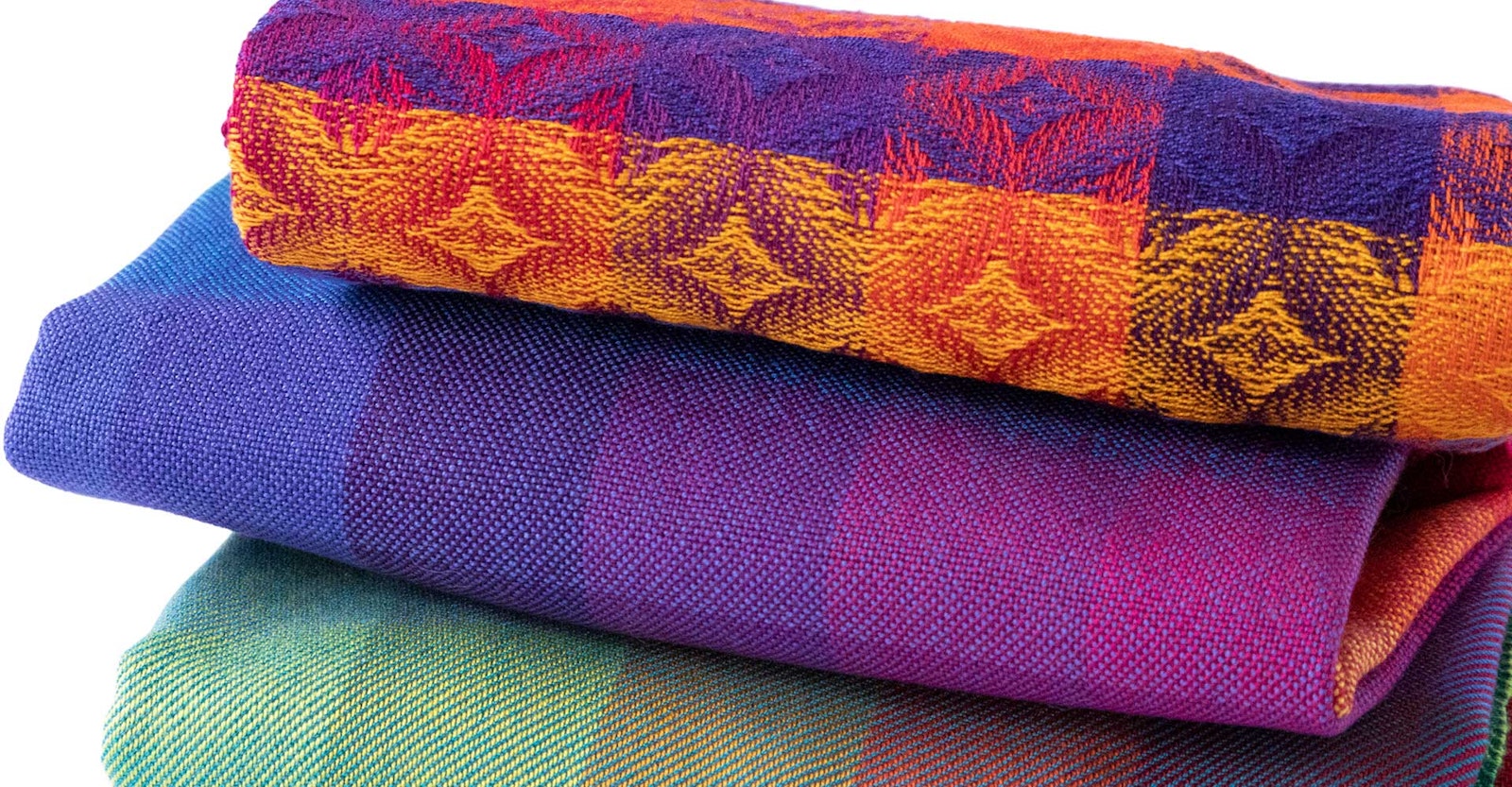I have worked with color for many years in a variety of textile arts: quilting, weaving, embroidery, and sewing. At one point, I took some painting lessons. I never did reach the skill level I had hoped for in painting, but as part of the series of classes I attended during that period, I took a color-theory class. Although prior to that class I hadn’t been aware that I was struggling with color, the class opened my eyes to a concept about color mixing that vastly improved my ability to mix colors in painting and in textiles. It made me wonder how I had worked in the arts for so many years not knowing this important concept: If your goal is to retain vibrancy in your color mixture, never include more than two primaries in your mix.
Most of us know the basics of color mixing. The primary colors (red, yellow, blue) are used to mix the secondary colors (red + yellow = orange, yellow + blue = green, blue + red = purple). But there is more to it than that. There are actually six primary colors; cool red, warm red, cool yellow, warm yellow, cool blue, and warm blue. You may find different names for the same colors on tubes of paint such as “alizarin crimson” (cool red), “cadmium red” (warm red), “lemon yellow” (cool yellow), “cadmium yellow” (warm yellow), “ultramarine” (cool blue), and “phthalo blue” (warm blue).
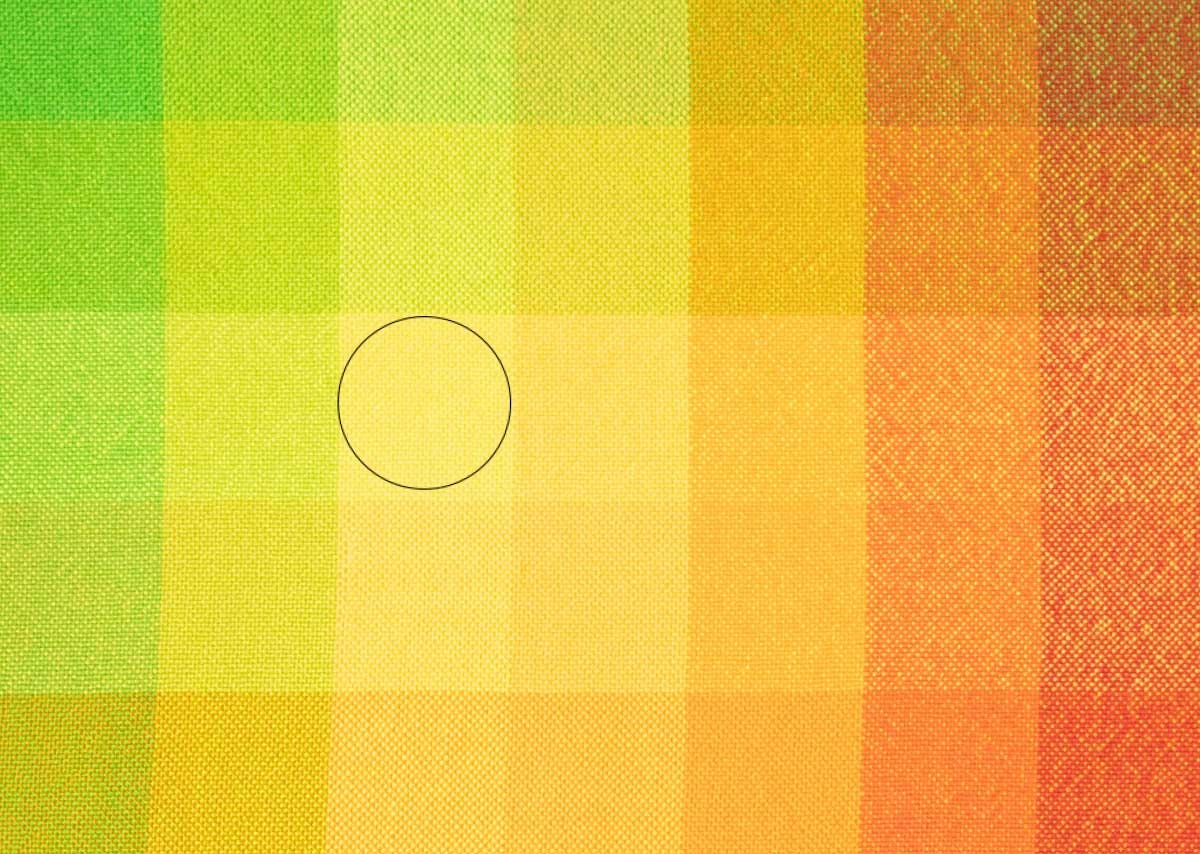
The circle on this plain-weave gamp woven with Lunatic Fringe Yarns Tubular Spectrum 10/2 cotton is placed on cool yellow. Notice how it differs from the yellow below it and to its right and how the two yellows mix with the surrounding hues.
No color is completely pure; there are traces of other hues in all of them. For example, cool yellow contains just a touch of blue and warm yellow contains just a touch of red. This is true for the other primaries as well: warm red contains yellow, cool red contains blue, warm blue contains yellow, and cool blue contains red. When we think of true yellow on a color wheel, we are actually identifying a mixture of both cool yellow and warm yellow. This is also true of the primaries red and blue: the color that we associate with each of these is a mixture of its warm and cool version.
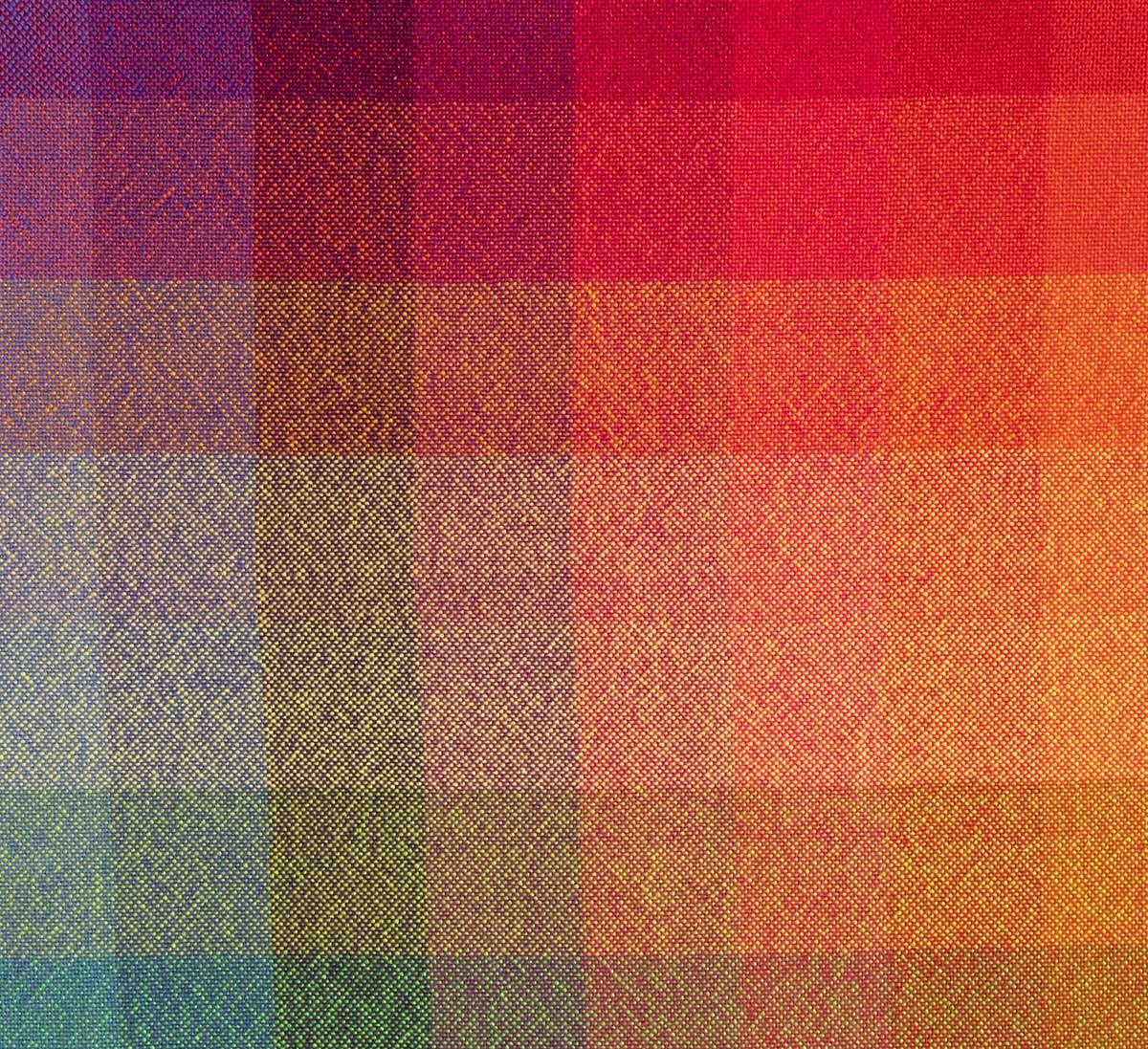
In another section of the same plain-weave gamp, notice how the red-purples and reds mix with their complements. In the right situation, you may want exactly those types of mixes.
Another basic of color mixing is that in order to dull a color down, you mix in its complement (opposite on the color wheel). For example, you would use a bit of purple to dull yellow. Because true yellow is a combination of mostly yellow (a combination of warm and cool yellow), it contains small amounts of blue and red. The little bits of blue and red combine to make purple—the complement of yellow. Therefore, you have three primaries in true yellow, and if you use it in color mixtures, this will decrease the color saturation.
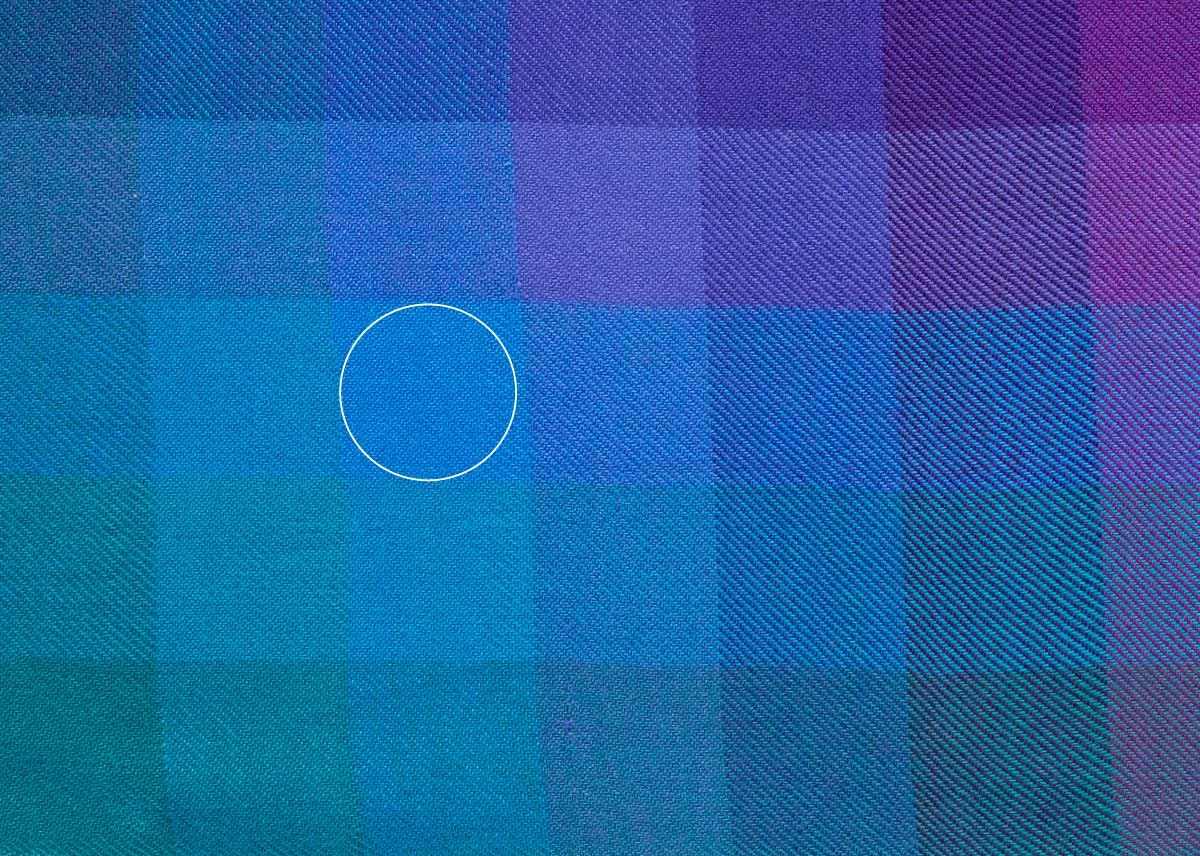
In this twill gamp, also woven using Lunatic Fringe Yarns Tubular Spectrum, the floats change our perception of the color blending. The circle indicates a square of pure warm blue.
In concrete terms, this means that if you want a vibrant green, mix cool yellow (which has a touch of blue) with warm blue (which has a touch of yellow). This mixture has only two primaries in it, yellow and blue. Conversely, if you wanted a duller green, you would mix either cool yellow (which includes blue) with cool blue (which contains red), or you could mix warm yellow (which includes red) with warm blue (which contains yellow). These mixtures each contain three primaries. The remaining possible combination of these blues and yellows is cool blue and warm yellow. This introduces even more red, because both the cool blue and warm yellow contain red, the complement, which yields an even duller result.
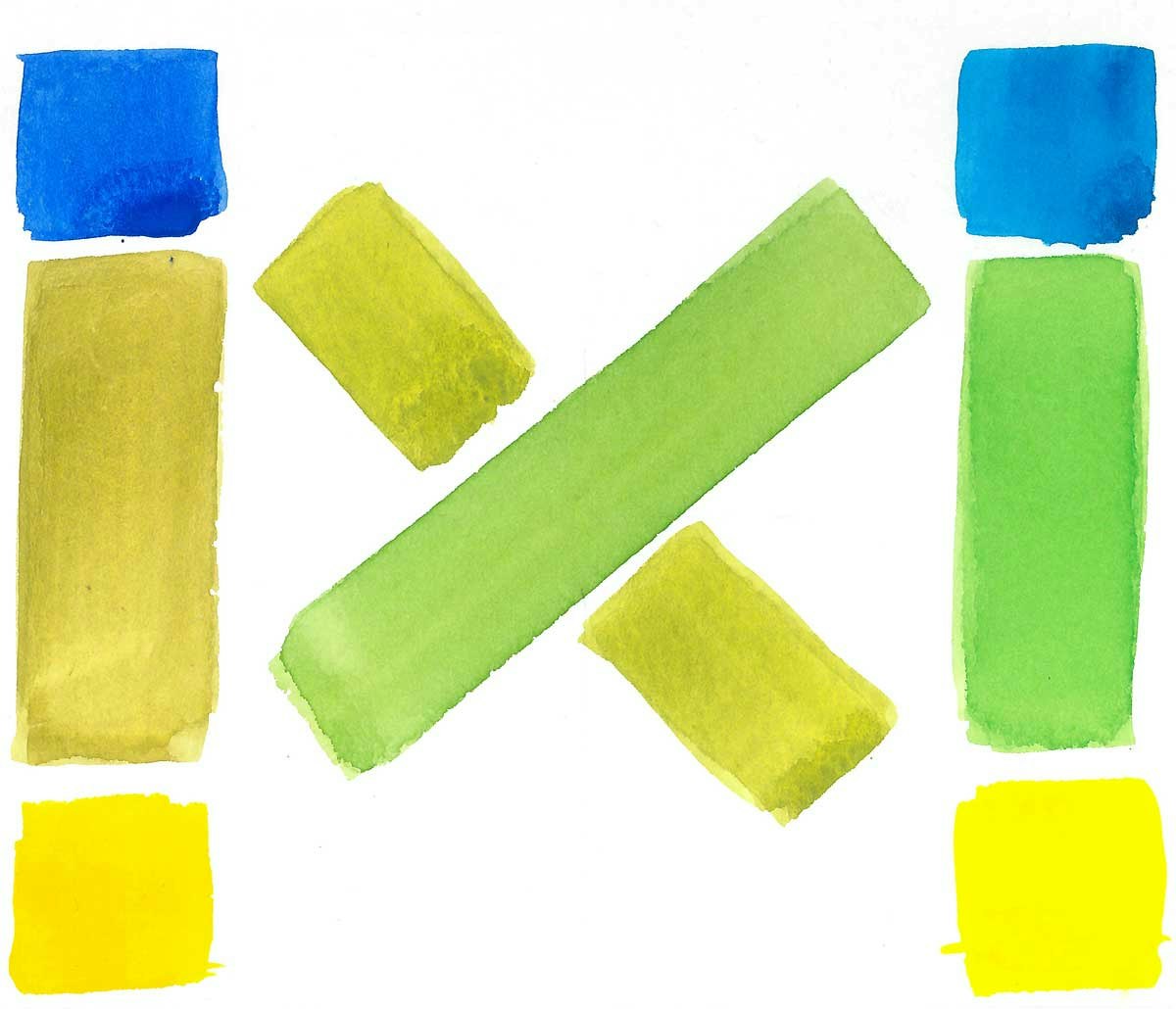
Warm and cool yellows and blues when mixed, yield four different greens. Illustration by Deborah Heyman
Of course, mixing paint is very different from mixing yarn. When you stir up a paint mixture, everything gets incorporated together into one resulting color. With weaving, the two colors intersect with each other, creating dots of color, and these little dots of color appear to blend—a phenomenon called “optical mixing.” Think pointillism in the painting world. The amount of this perceived blending is dependent on the scale: a very fine plain weave will appear to blend more than a plain weave woven with a larger grist yarn. The type of weave structure will also affect the amount of blending. For example, a plain weave will blend more than a twill of equivalent size yarn. A weave structure that includes long floats will blend even less, as the floats will stand out against the background color. See the photograph on the first page that shows how color mixing changes depending on float length.
Bright colors and dull colors have their uses and places. Understanding color principles helps you achieve the color blends you want while avoiding disappointing surprises when colors mix within your weaving.
Editor’s note: Thank you to Lunatic Fringe Yarns for providing their beautiful gamps to accompany this article.

